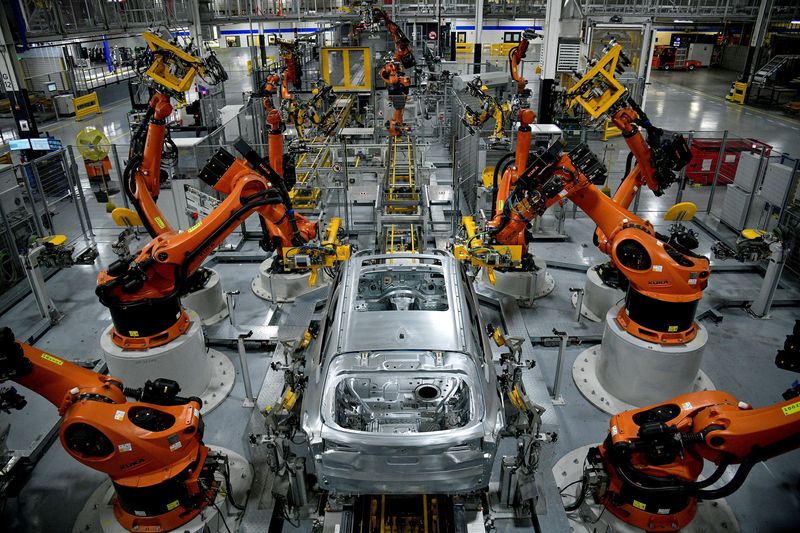WASHINGTON (Reuters) - U.S. manufacturing appeared to stabilize at weaker levels in July amid a gradual improvement in new orders, but factory employment dropped to a three-year low, suggesting that layoffs were accelerating.
The Institute for Supply Management (ISM) said on Tuesday that its manufacturing PMI edged up to 46.4 last month from 46.0 in June, which was the lowest reading since May 2020.
It was the ninth straight month that the PMI stayed below the 50 threshold, which indicates contraction in manufacturing, the longest such stretch since the 2007-2009 Great Recession. Economists polled by Reuters had forecast the index would rise to 46.8.
While the ISM survey continues to offer a grim assessment of manufacturing conditions, so-called hard data suggest the sector is shuffling along. Data from the Federal Reserve last month showed factory production rebounded in the second quarter, ending two straight quarterly declines.
The government reported last week that business spending on equipment grew solidly in the second quarter after slumping in the prior two quarters. Manufacturing, which accounts for 11.1% of the economy, has been slammed by 525 basis points worth of interest rate increases from the Fed since March 2022.
Spending on long-lasting manufactured goods has slowed after booming during the COVID-19 pandemic, with services like airline travel and visits to amusement parks now in favor.
The ISM survey's forward-looking new orders sub-index increased to 47.3 in July. That was the highest reading since October 2022 and was up from 45.6 in June.
Despite the continuing drag from higher borrowing costs, the outlook for orders is improving as demand for goods holds up, encouraging businesses to rebuild inventories. Inventories for factories and customers remained low in July, which bodes well for future production.
Weak orders are keeping prices for inputs subdued. The survey's measure of prices paid by manufacturers rose to a still-low 42.6 in July from 41.8 in June amid the significant improvement in supply chains.
According to the ISM, the delivery performance of suppliers to manufacturing firms has been faster for 10 straight months. Goods disinflation is helping to dampen price pressures in the economy, with annual inflation decelerating sharply in June.
With orders still depressed, factory employment is shrinking. In June, the ISM reported that companies "began using layoffs to manage head counts, to a greater extent than in prior months." That practice probably gathered momentum in July. The survey's gauge of factory employment dropped to 44.4, the lowest reading since July 2020, from 48.1 in June.

It has, however, not been a reliable predictor of manufacturing employment in the government's nonfarm payrolls count. Factory employment has largely increased this year.
Manufacturing employment likely rose by 5,000 jobs last month, according to a Reuters survey of economists. Overall nonfarm payrolls are forecast to rise by 200,000 jobs in July after increasing by 209,000 in June. The U.S. Labor Department is due to release the employment report for July on Friday.